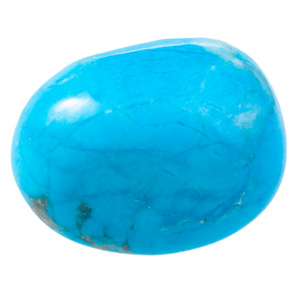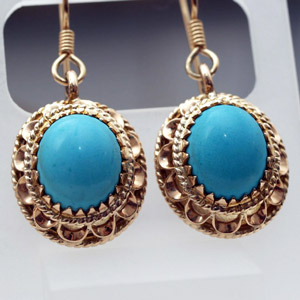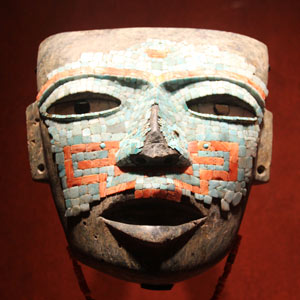turquoise
Turquoise, a captivating gemstone with a name that pays homage to its origins, derives from the French word "turquois," meaning "Turkish stone." Composed of hydrated copper and aluminium phosphate, turquoise showcases a distinctive blue-green hue that has been cherished for centuries.
Geologically, turquoise forms in arid regions where water interacts with copper deposits, leading to the creation of this enchanting gemstone. Notable sources include the United States, Mexico, and Iran, each offering unique shades and qualities.
What distinguishes turquoise is its vivid colour, often associated with the vibrant landscapes of the American Southwest. This gemstone has a rich history, revered by ancient cultures for its protective and healing properties.
One interesting fact about turquoise is its role as a symbol of friendship and good fortune. It is often used in jewellery and amulets to bestow positive energy and blessings upon the wearer. With its captivating hue and cultural significance, turquoise remains a cherished gemstone worldwide.
Click on the terms in the table below to discover their meaning



Click on the terms in the table below to discover their meaning
| Name | Turquoise |
|---|---|
| Category | Phosphate mineral |
| Chemical Formula |
CuAl6 |
| IMA Symbol | Tqu |
| Crystal System | Triclinic |
| Crystal Habit | Rare steep pinacoidal crystals; fine granular to cryptocrystalline, nodular to globular crusts, veinlets, massive |
| Twinning | Common |
| Cleavage | Perfect / Good |
| Fracture | Conchoidal |
| Tenacity | Brittle |
| Hardness (Moh's Scale) |
5 - 6 |
| Specific Gravity | 2.86 - 2.91 |
| Diaphaneity | Transparent in crystals; translucent to opaque if massive |
| Colour | Turquoise, blue, blue-green, green |
| Streak | White to pale greenish blue |
| Lustre | Vitreous in crystals; dull to waxy if massive |
| Optical Class | Biaxial (+) |
| Refractive index | nα = 1.61 |
| nβ = 1.62 | |
| nγ = 1.65 | |
| Birefringence | δ = 0.040 |
| Dispersion | Rd = 0.014 |
| Pleochroism | X = colourless; Z = pale blue or pale green |
| Clarity | Has own grading system based on colour, texture, and the absence of matrix |
| Notable Varieties | Sleeping Beauty Turquoise, Persian Turquoise, Bisbee Turquoise, Kingman Turquoise, Morenci Turquoise, Chinese Turquoise, Royston Turquoise, Cerrillos Turquoise, Pilot Mountain Turquoise, Mexican Turquoise |
References
Gemological Institute of America. (2023). Turquoise. Retrieved from: https://
Hudson Institute of Mineralogy. (2023). Turquoise. Retrieved from Mindat.org: https://
Mineralogical Society of America. (2005). Turquoise. In J. W. Anthony, R. A. Bideaux, K. W. Bladh, & M. C. Nichols (Eds.), Handbook of Mineralogy. Chantilly, VA 20151-1110, USA: Mineralogical Society of America. Retrieved from https://